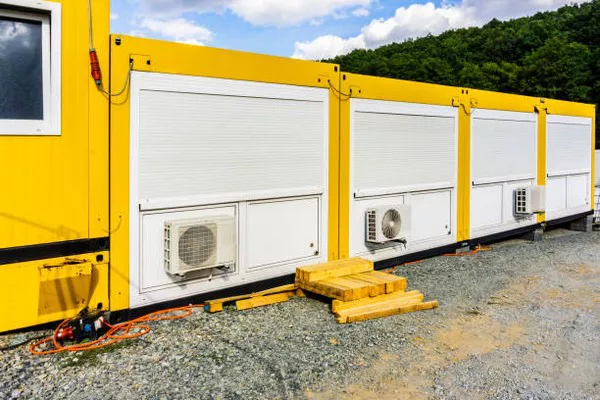In the world of refrigeration, the condenser is an unsung hero that plays a pivotal role in the cooling process. It’s a critical component that transforms high-pressure, high-temperature vapor refrigerant into a liquid state, releasing heat in the process. Whether it’s in your home refrigerator, air conditioning unit, or industrial cooling system, the condenser is a cornerstone of efficient cooling. This article dives into the multifaceted purpose of the condenser in refrigeration systems, highlighting its significance and the mechanisms that drive its operation.
Understanding the Basics: Refrigeration Cycle
Before delving into the role of the condenser, it’s essential to grasp the fundamental refrigeration cycle. Refrigeration systems work by manipulating the properties of a refrigerant, a substance that can change from a low-pressure vapor to a high-pressure liquid and vice versa at relatively low temperatures. The cycle comprises four main stages: compression, condensation, expansion, and evaporation.
The condenser falls into the second stage of this cycle, following compression. Once the refrigerant vapor is compressed by the compressor, it becomes high-pressure and high-temperature. The condenser then takes center stage, converting the vapor back into a liquid state.
Crucial Functions of the Condenser:
1. Heat Dissipation:
The primary purpose of the condenser is to release the heat absorbed from the cooled space or environment during the evaporation phase. The high-pressure vapor refrigerant enters the condenser with significant thermal energy. As it circulates through the condenser coils, it comes into contact with a cooling medium, typically air or water. The heat is transferred from the refrigerant to the cooling medium, causing the refrigerant to condense into a liquid.
2. Pressure Reduction:
The condenser also serves as a pressure-reducing device. The vapor refrigerant enters the condenser at high pressure, but as it releases heat and transforms into a liquid, its pressure decreases. This reduction in pressure prepares the refrigerant for the next phase of the cycle, the expansion valve, where it undergoes a sudden drop in pressure and temperature, transitioning back to a low-pressure vapor state.
3. Thermal Energy Rejection:
The condenser acts as the location where the thermal energy absorbed during the evaporation phase is rejected to the surroundings. This thermal rejection is crucial for maintaining a temperature difference that drives the refrigeration process. Without proper condensation and heat dissipation, the refrigerant would remain in a vapor state, rendering the cooling cycle ineffective.
Types of Condensers:
There are various types of condensers used in refrigeration systems, each with its own advantages and applications:
1. Air-Cooled Condensers:
These condensers use ambient air as the cooling medium. The refrigerant flows through coils, and a fan blows air over the coils, facilitating heat exchange. Air-cooled condensers are common in residential air conditioning units and small-scale refrigeration systems.
2. Water-Cooled Condensers:
Water-cooled condensers utilize water as the cooling medium. They are more efficient than air-cooled condensers but require a continuous water supply. They are commonly used in larger commercial and industrial refrigeration systems.
3. Evaporative Condensers:
These condensers combine air and water cooling methods. Water is sprayed over the coils, and air is blown through the wet coils, causing evaporation and enhanced heat exchange. Evaporative condensers are energy-efficient and suitable for large-scale industrial applications.
Efficiency and Maintenance:
The efficiency of a refrigeration system is heavily influenced by the performance of the condenser. A well-designed and properly maintained condenser ensures effective heat dissipation, which in turn improves the overall cooling process. Regular maintenance, including cleaning the condenser coils and ensuring proper airflow, is essential to prevent efficiency losses and maintain the system’s performance.
Conclusion: The Unsung Hero
In the intricate dance of refrigeration cycles, the condenser stands as a vital choreographer. Its ability to convert high-pressure vapor into a liquid state while releasing absorbed heat is indispensable for cooling spaces and preserving perishable goods. From household refrigerators to industrial cooling systems, the condenser silently performs its duty, ensuring the comfort of our environments and the efficiency of complex cooling processes.
As we marvel at the cooling capabilities of modern refrigeration systems, let us not forget to acknowledge the unsung hero working diligently behind the scenes – the condenser. Its purposeful orchestration of heat dissipation and pressure reduction is the cornerstone of efficient cooling, shaping our lives in ways both tangible and intangible. So, the next time you reach into your refrigerator or enjoy the comfort of air conditioning, remember that it’s the condenser that makes it all possible.

